Wealth freedom always seems out of reach, and there are always buyers at high positions.
Written by: Shenchao TechFlow

You may not have played CS:GO, but you definitely have a friend who made some money from it, though recently they might have lost some.
As the hype around meme coins gradually fades, some speculators who once floated in the volatile waves of meme coins are now turning their attention to CS:GO skins, discussing the K-line charts of CS:GO items in various cryptocurrency trading groups. Once "meme hunters" in the crypto world, they have transformed into "skin traders," viewing CS:GO skins as the next key to wealth.
CS:GO (Counter-Strike: Global Offensive) was officially released on August 21, 2012, and introduced the weapon case and skin system in 2013, allowing trading on the Steam market. This laid the economic foundation for CS:GO items, which has experienced a twelve-year boom, despite attempts at free-to-play and multiple updates.
In May 2025, the CS item market suddenly collapsed, with the item index plummeting 20% in three days, and prices of several popular trading items nearly halved, sparking heated discussions among users on various platforms. This sense of market collapse is all too familiar to cryptocurrency traders, except this time they are holding "virtual gun skins."
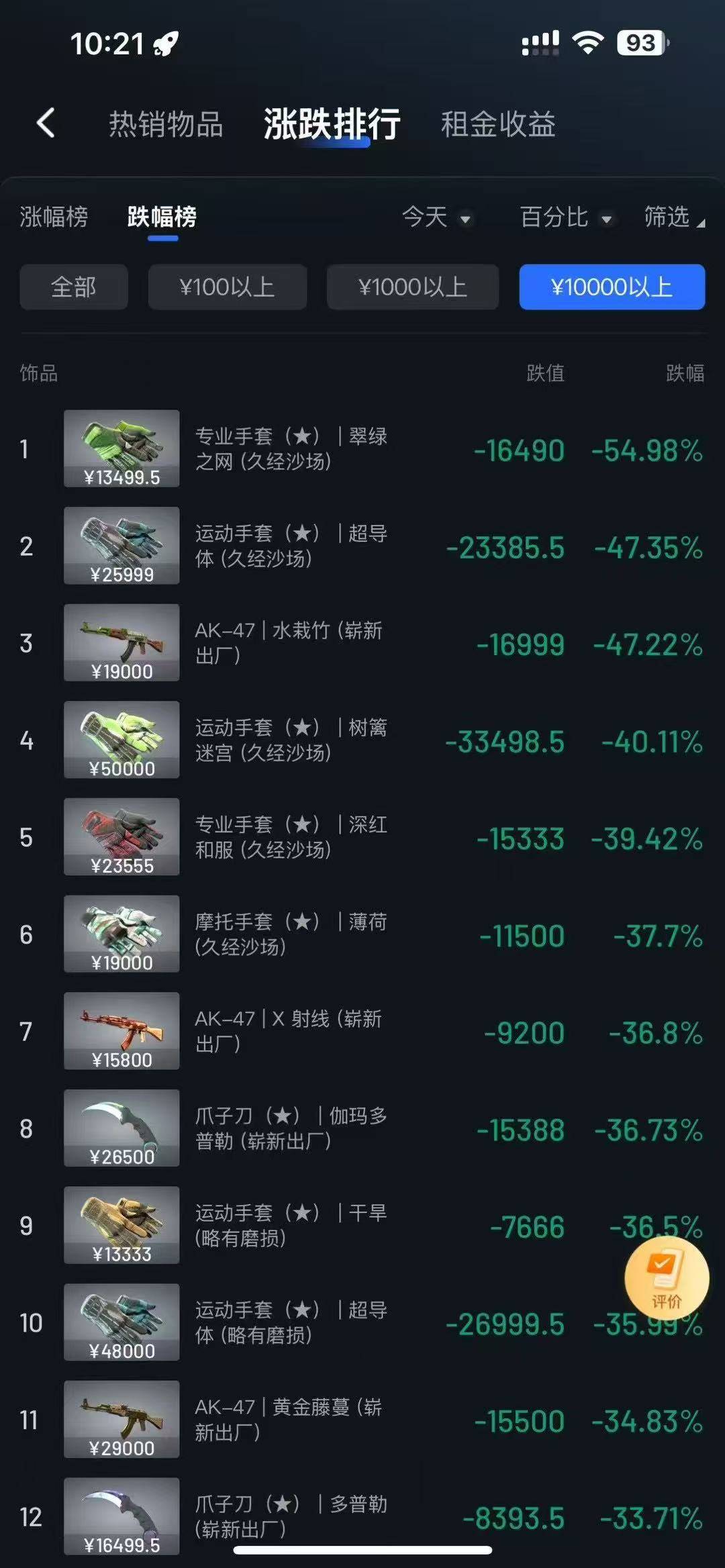
Players who have been happily enjoying the appreciation of their skins suddenly found themselves "no longer happy" overnight.
A market driven by speculation is fragile; how did these skins, resembling NFTs and plummeting like meme coins, attract their followers, and what will it bring?
Making Money, A Convenient Task
In April 2025, while meme coin markets were lukewarm, the CS:GO skin market was thriving, attracting the attention of many cryptocurrency players.
Everything began with the Arms Deal update in 2013, when skins (also known as "items," essentially graphic overlays that modify the appearance of weapons in CS) were introduced, obtainable only through random drops in the game.
This initiated an era of "opening cases is like a lottery." To obtain rare skins, players gradually began trading among themselves. The rise of skin trading websites further propelled market prosperity, giving birth to a comprehensive ecosystem—players, trading platforms, streamers, "traders," black markets, data tools, and more.
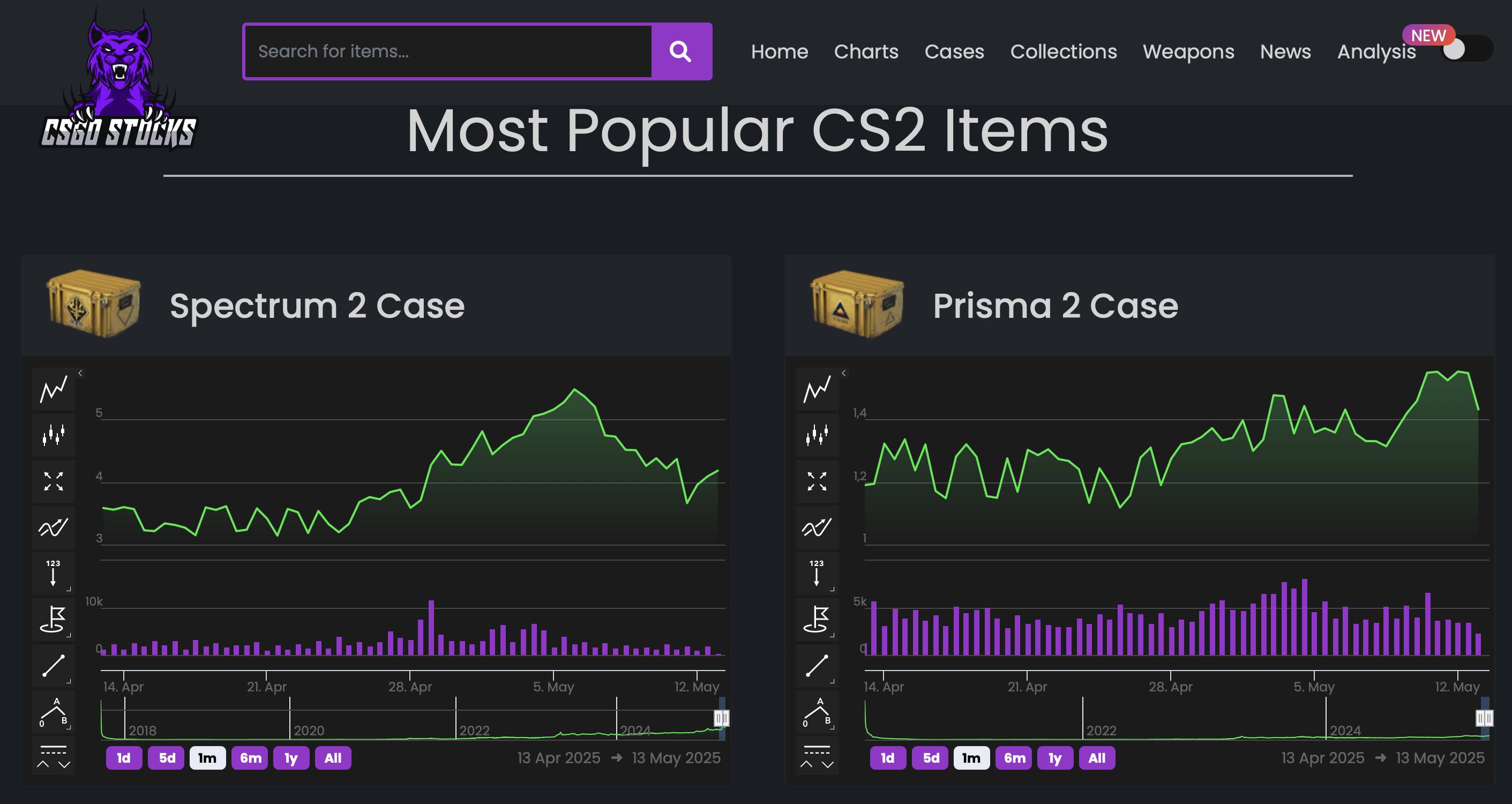
Even historical price K-line charts emerged.
Source: CSGO STOCKS
However, most people who felt the ups and downs of the CS:GO skin market initially just wanted to play.
In 2019, Mantou was still in college. At first, the game was just a game. As he puts it, "After playing for a while, I wanted to buy skins," which is a perfectly normal thing for players.
For CS:GO players, skins are not just decorations; they serve as a form of social currency. High-quality or rare skins showcase a player's status in the community and satisfy their vanity. This naturally created a demand for item circulation, leading to the emergence of a corresponding market.
As Mantou learned more about this market, he noticed the significant price increases of skins. Being a college student with little money at the time, he developed the impulse to "trade skins."
His first pot of gold was not large—"I made a few hundred bucks at first, and I was happy for a few days."
For Mantou, buying skins and playing the game felt more like complementary activities rather than solely making money from skins. He didn't think much about trading strategies; "I just wanted to play, so I bought them to play," but the fluctuations in the item market would also draw him back to CS:GO. For instance, in April this year, he returned to the game because he heard "the items were hot."
In fact, CS:GO and the economy it created for items are indeed complementary.
Well-known KOL Huajiao once conducted research on the market economy created by this game out of curiosity. In his view, the enduring wealth effect of the CS:GO item market is inseparable from the game's inherent attributes.
"As a shooting game, CS:GO's gameplay is very simple and hasn't changed much since its initial development," he said. Coupled with Valve's frequent events to stimulate interest, this attracts old players to return quickly due to nostalgia or other factors.
While quickly attracting or retaining old players, the promotion by esports streamers has also lowered the entry barrier, drawing a continuous influx of "new generation players" (mostly college students) into the market, contributing to its growth.
Vanity drives players to trade skins, while the prospect of making money attracts a steady stream of new and old players, making the concept of earning while playing the best annotation for the CS:GO game and item economy.
Let the Item Prices Soar
The price range of CS:GO items is astonishing, from ordinary skins costing a few yuan to rare treasures worth tens of thousands or even hundreds of thousands, forming this unique ecosystem. It resembles the stratification of cryptocurrencies—ordinary skins are like "air coins," while top-tier items like Dragon Lore and Butterfly Knives are comparable to BAYC and CryptoPunks in the NFT world, with their prices constantly breaking records due to scarcity and consensus premium.
A large number of common weapon cases and ordinary quality skins sit at the bottom of the price spectrum. For example, the "Snakebite Case" may sell for about $0.36 (approximately 2.5 yuan), as these items are relatively easy to obtain and have a large supply, making their prices accessible and satisfying the basic personalization needs of most players.
In the mid-price range, items typically cost between dozens to hundreds of yuan. These items often feature better designs, a certain degree of rarity, or cater to more popular weapons.
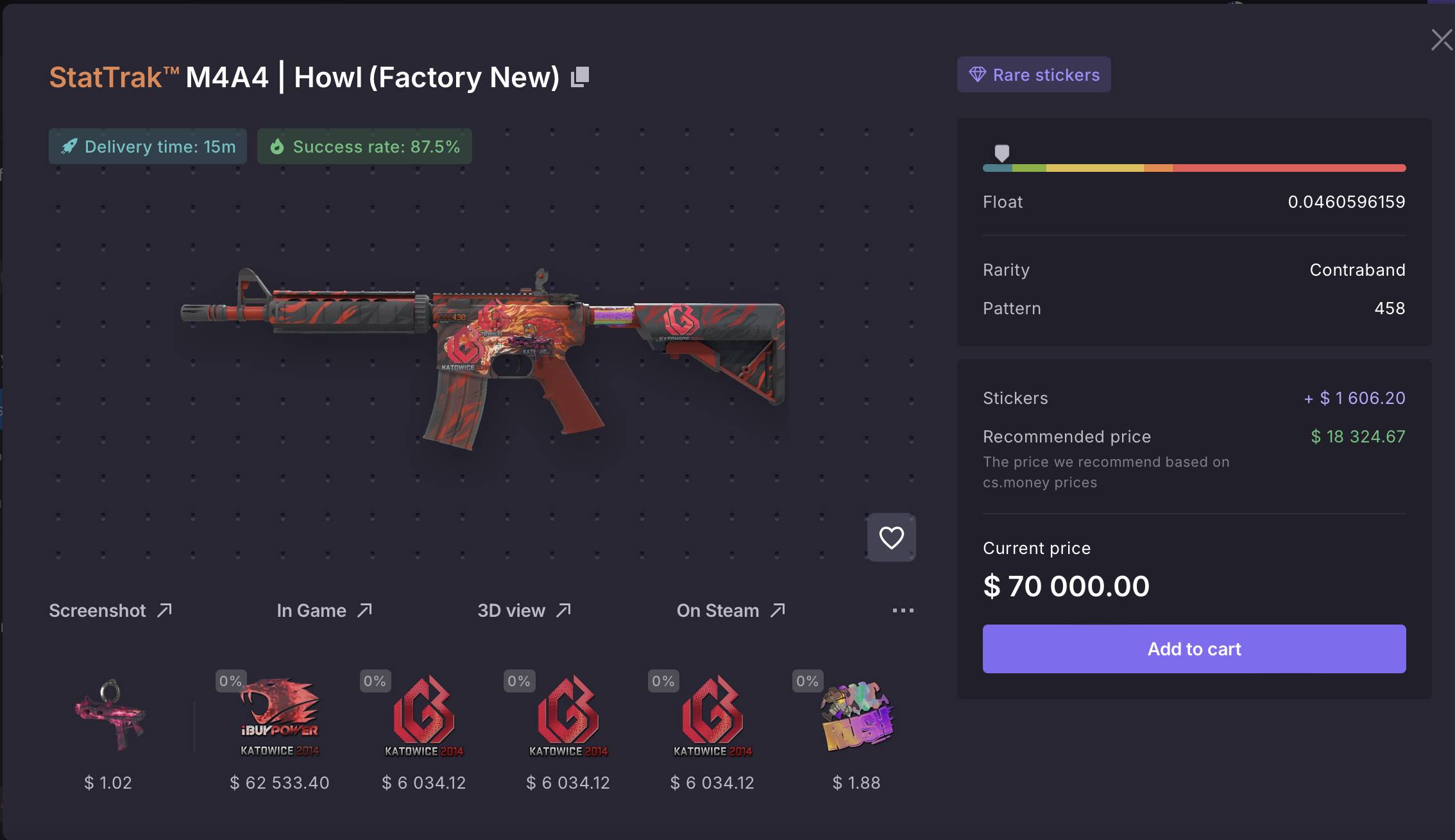
Source: CSmoney
In the high-end market, prices exhibit exponential growth, with items costing thousands or even tens of thousands of yuan being common. These are usually extremely rare knives, gloves, and legendary or very rare top-tier gun skins. A brand new "M4A4 | Howl" with kill count tracking and rare stickers has a recommended price of $18,324 (approximately 130,000 yuan) on second-hand platforms.

Source: ShadowPay website article
These high-priced items have transcended mere game props and are viewed as collectibles and investment assets.
Overall, factors such as the aesthetic appeal, wear level, rarity, style, the operations of item traders ("traders"), student holidays, new drops, and even streamer effects all influence their market prices. Platforms like Steam's market and third-party trading websites also play a crucial role in shaping the CS:GO skin market.
Even if the influencing factors can be rationally sorted out, the whimsical nature of item prices is still surprising. This capriciousness is common in both the CS:GO item market and the cryptocurrency world.
When CS:GO announced its upcoming upgrade to CS2 in 2023, many high-priced skins and rare stickers saw price increases. However, just a few months later, when CS2 officially launched, many skins experienced significant price drops due to changes in visual effects or drop mechanisms, leaving many players who bought at high prices "stuck." Similarly, the $TRUMP coin, which was launched just before Trump's presidency, also enjoyed a brief period of glory, only to see its price plummet immediately after he took office, leaving chaos in its wake.
However, the price fluctuations and trading of items, while seemingly random and free like memes, are actually under Valve's control. The entire economic ecosystem surrounding items must adjust according to the studio's rules, with Valve holding absolute initiative.
Huajiao stated, "They (Valve) control all the probabilities and the rarity of each skin that drops, and they can tell you where to go." Even the visual effects of skins in the game can change due to updates, "Why does CS2 have such a big impact on prices? Because Valve changed the display of some skins in the game; some look better, and some look worse," Mantou said.
In CS:GO, items can indeed be financial products that can soar, but looking down, the string of this kite is always held by Valve.
In extreme cases, the item market carries the risk of "what if Valve updates tomorrow and no longer allows free trading of skins." As Mantou said, "You cannot grasp the changes in Valve's policies; NFTs are easier to operate in this regard."
Cryptocurrency Stories, The Item Market Repeats
The financial attributes of items and their price fluctuations have led many in the crypto circle to exclaim—"Isn't this just NFT?!"
This is not baseless; even the "earn while playing" effect it inadvertently achieves aligns with the "play to earn" goal pursued by GameFi design.
Although CS:GO items can be used in the game, which constitutes a difference in practicality from NFTs, Mantou stated, "Some expensive ones are indeed good-looking," but in reality, this is just a small part.
"Skins have no functionality, not even adding three points of attack," for the vast young player base, items carry more complex psychological needs and social significance. They are a concentrated embodiment of aesthetic pursuit, face culture, and identity symbolism, which resonates with the role NFTs play in certain circles.
Professional item trading websites like Jbskins.com, when describing a max gold sticker from the 2022 Antwerp Major, also pointed out that it "is not just a simple sticker, but a symbol of identity." "While it doesn't enhance your skills, it definitely enhances your gaming experience and social standing."
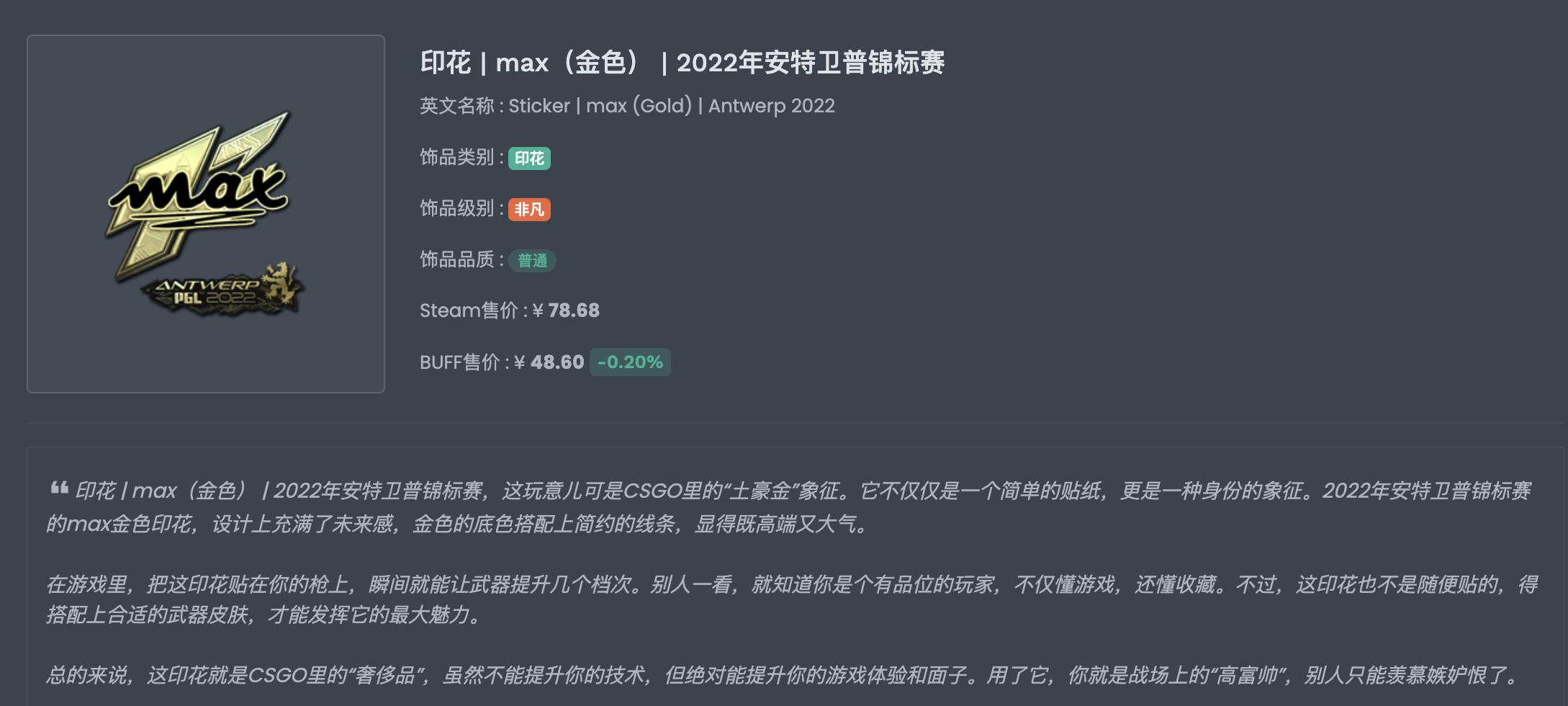
In addition to the social identity symbolism, both share similarities in price-driving factors.
Huajiao noted that the prices of specific items on CS:GO can rise due to the celebrity effect of streamers and esports players, while NFTs, primarily as identity symbols, also require some celebrity effect to drive their prices.
Celebrity endorsements from superstar purchases can drive the floor price of NFTs up, with prices soaring hundreds or even thousands of times in a short period. However, once market sentiment shifts, liquidity tightens, or negative news about the project itself emerges, NFT prices can plummet dramatically in a short time, causing significant losses for those who bought at high prices.
Coincidentally, after the collapse of the CS:GO item market, the cryptocurrency and meme markets have quietly warmed up again. Ethereum, which had been dormant for a long time, saw a nearly 40% increase over seven days, breaking through $2,500, while old coins like $PEPE, $PNUT, and $moodeng have also rebounded. Some even speculate that funds are circulating between different virtual assets, creating an alternative "vampire effect." Although this cannot be directly proven, the coincidence of this capital flow has become a topic of conversation among cryptocurrency community members.
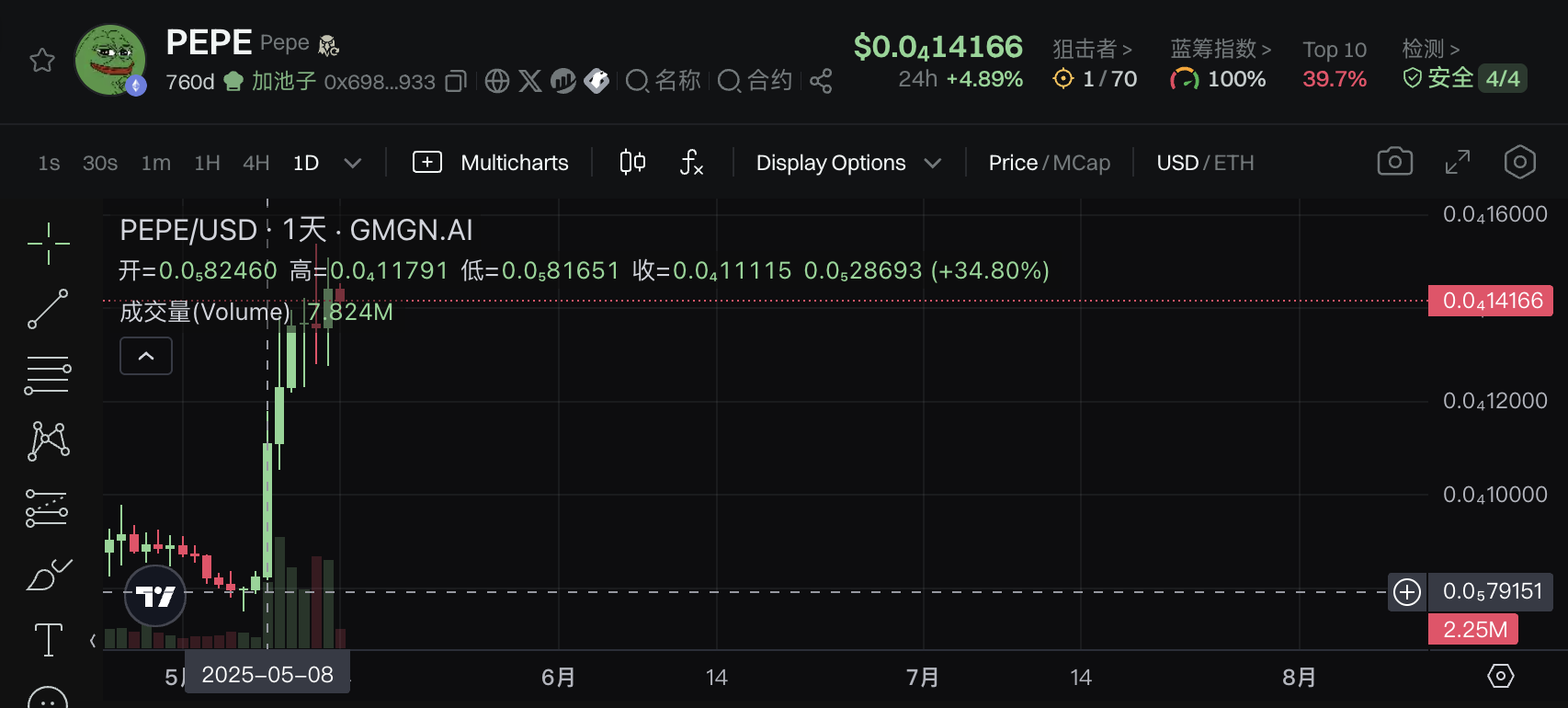
Opportunities and risks always coexist. Before May, CS:GO players who had been enjoying stable happiness for a while faced this unprecedented price cliff.
Mantou, who previously made 50,000 yuan from the appreciation of items, found it all gone overnight and ended up losing 70,000. When discussing his views on this decline, he appeared quite calm, having "played in the crypto world for too long." He believes that compared to the previous declines that felt like "a dull knife cutting flesh" with little trading volume, this drop, despite its magnitude, had a decent trading volume. If the item market can attract more attention and gradually recover, it should be a good thing.
After all, from meme coins to CS:GO items, the story of cyber speculation will never end. Markets, emotions, greed, and fear continue to cycle through different arenas.
The only constant is that wealth freedom is always out of reach, and there are always buyers at high positions.
免责声明:本文章仅代表作者个人观点,不代表本平台的立场和观点。本文章仅供信息分享,不构成对任何人的任何投资建议。用户与作者之间的任何争议,与本平台无关。如网页中刊载的文章或图片涉及侵权,请提供相关的权利证明和身份证明发送邮件到support@aicoin.com,本平台相关工作人员将会进行核查。




